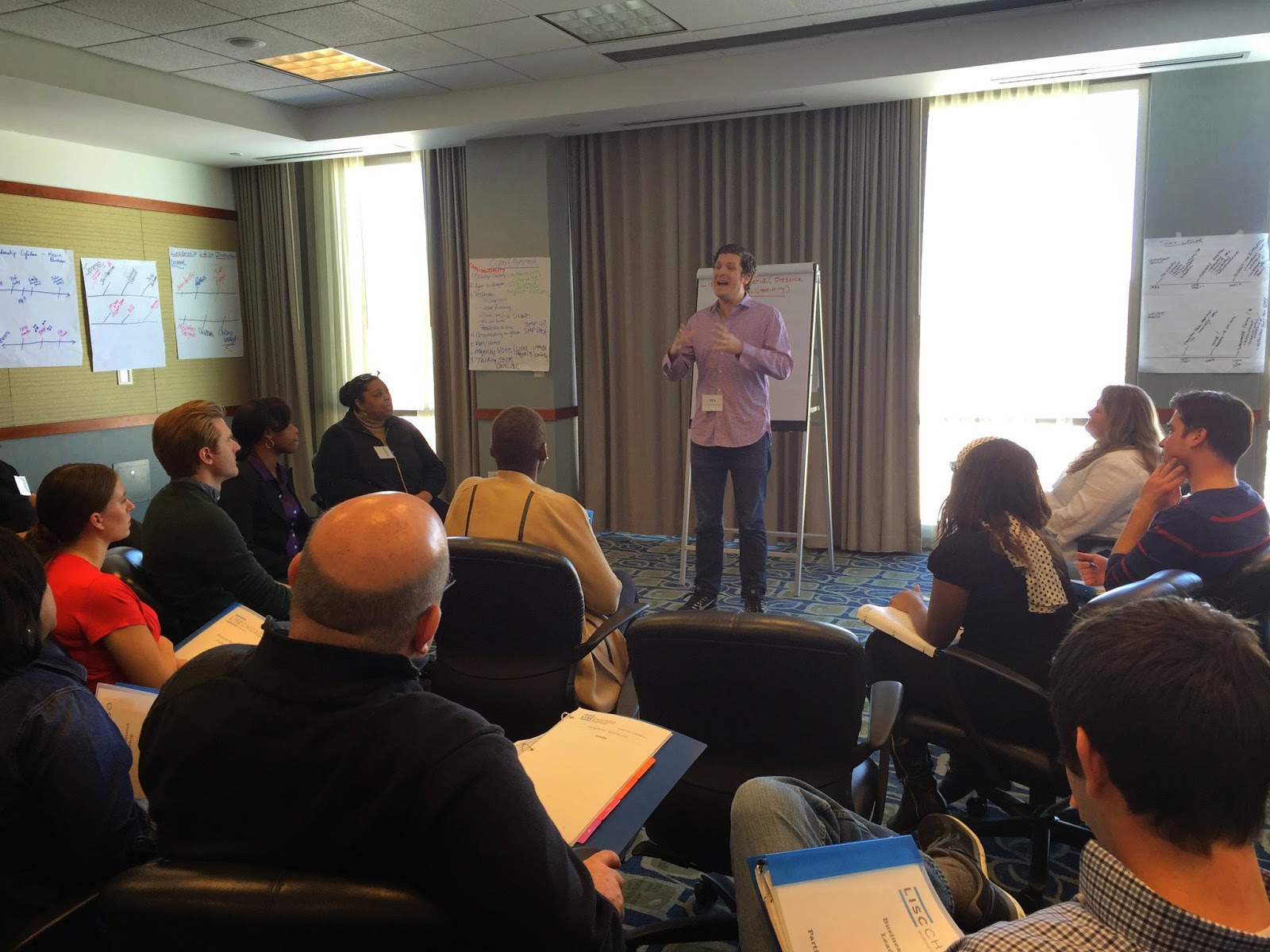 |
| A BDL participant sharing their vision stand |
How do you succinctly and effectively find partners and
champions to support you in your corridor revitalization efforts? For corridor
managers, the key to success hinges on the answer to this question.
For most, a one-on-one conversation is critical to engaging
and garnering support from key stakeholders. Think about it. Have you ever
gotten a big grant without a one-on-one pitch to a funder? Have you ever
convinced a business to come to your corridor without a one-on-one? My guess is
no.
This afternoon the LISC Chicago Business Leadership program
worked on this issue. We call them “Vision Stands”. What are those, you ask? At
its most basic, a vision stand is a clear and compelling picture of the future
you envision…in less than 2 min. Basically an elevator speech. And a darn good
one.
Why is a succinct pitch so important? Because the truth is
that attention span is short – most of the time you lose your audience to their own thought
processes long before you get to the so called important part of your pitch. Being
able to engage is critical to getting others to enroll and provide support for
your efforts.
So what makes for a good vision stand? In the BDL program, participants
are each given 2 minutes to present their visions to the whole group. They are
then provided feedback from one another on three key areas - presence, clarity
and credibility. They are pushed to make sure that their vision inspires, and
to do that, they need to make sure that they excel in those three key areas.
- Presence refers to how you show up in front of the group. The speakers quality of being and connection with the group and people’s experience of the speaker who is up in front of them.
- Clarity refers to an individual’s ability to explain their thoughts clearly and to leave the audience with an ability to summarize elements from their vision.
- Credibility is the toughest of the three. This refers to the ability of the speaker to offer the audience a sense that they can do what they said they were going to do. Is the speaker believable and do they have the capacity to pull it off? Are they believable? Do they exude confidence. Does their body language communicate self confidence in their work?
After the exercise, our facilitator Jose Acevedo shared with
us research conducted by Albert Mehrabian from UCLA. What Mehrabian found was
that three things contribute to how people perceive and feel about the speaker –
whether they like or dislike the speaker and message. What I found fascinating
is that people’s perception of you has very little to do with the content of
what you say. In fact, only 7% of their feelings are associated with the actual
words you say. 38% is related to voice dynamics and the WAY words are said. And finally, 55% of people’s perception of you
is related to your body language, specifically your facial expressions.
 |
| Receiving praise from participants after a Vision Stand |
Understanding this is powerful, because it tells us about
the importance of non-verbal communication in building credibility with our stakeholders. So step away from your email, and
make or the call, or better yet, set up a one-on-one with a potential new
partner and be prepared to share your vision. This is the first step in your ability
to convince others to contribute to your efforts – whether that be a
contribution of time (like attendance at meetings), money (contributions in the
form of membership, or grants or city funding), or expertise.
Good luck!

No comments:
Post a Comment